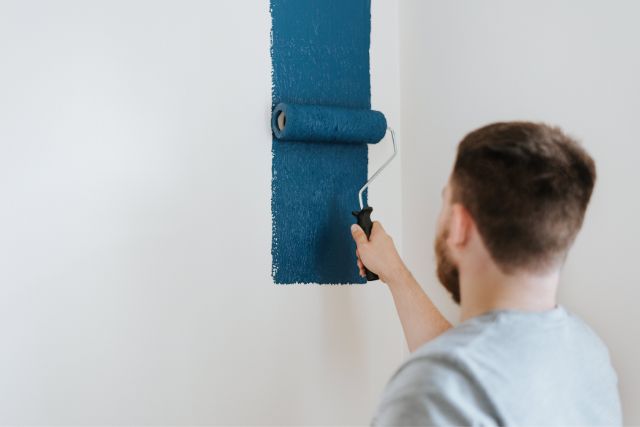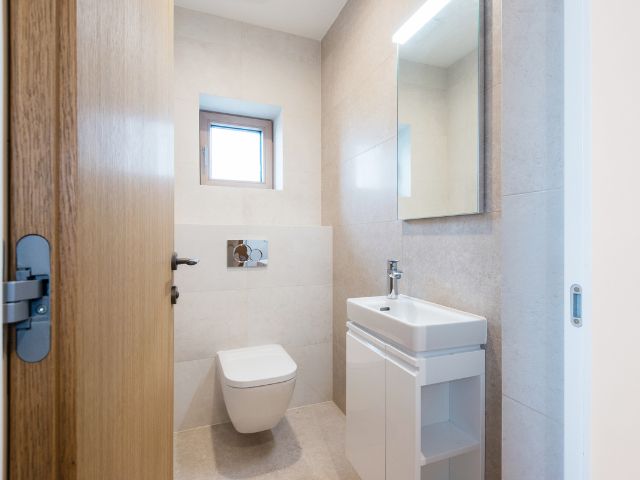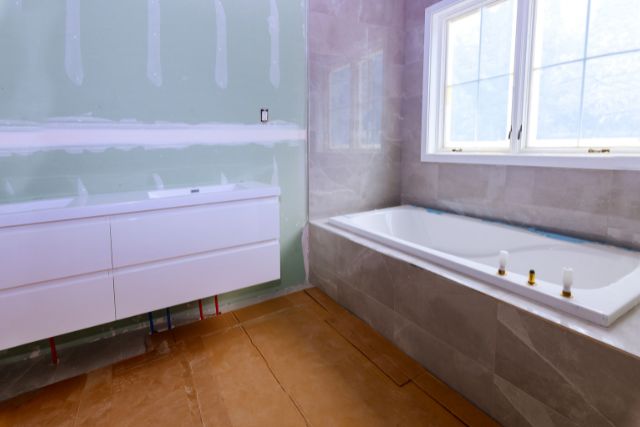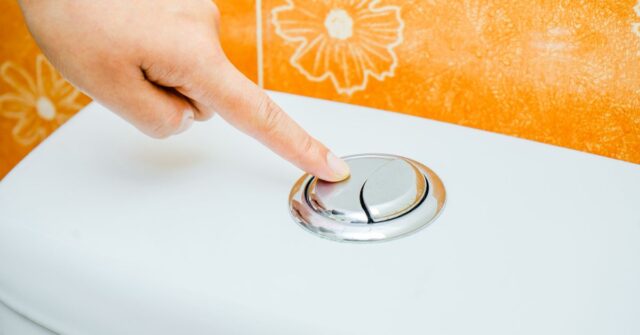Understanding the importance of low-VOC paints in bathroom spaces is critical for both health and environmental considerations.
Bathrooms, often compact and frequently damp, are particularly susceptible to the detrimental effects of volatile organic compounds (VOCs).
Introduction to VOCs and Their Impact
Volatile Organic Compounds (VOCs) are gases that are emitted by various solids or liquids, many of which have short- and long-term adverse health effects.
Commonly found in traditional paints, these compounds contribute to indoor air pollution and pose health risks.

What Are VOCs?
VOCs encompass a variety of chemicals, which vaporize at room temperature and enter the air we breathe.
Some VOCs are naturally occurring, while many are synthetic and found in manufactured products.
Common Sources of VOCs in the Home
Aside from paint, VOCs are commonly emitted by cleaning agents, building materials, and even furnishings.
Their levels can be significantly higher indoors than outdoors, especially during and immediately after a new paint application.
Health Risks Associated with VOCs
Exposure to VOCs can lead to respiratory problems, skin and eye irritation, and more severe health issues like liver and kidney damage or central nervous system impairment.
In bathrooms, where ventilation may be limited, the concentration of these harmful gases can be particularly high.
Why Focus on Bathrooms?
Bathrooms are not only small but also typically have higher humidity levels, which can enhance the emission rates of VOCs from painted surfaces and increase exposure risks.
Unique Conditions of Bathrooms
The steamy, warm conditions typical in bathrooms allow VOCs to vaporize more quickly than they might in cooler, drier rooms.
Higher Exposure Risks in Small Spaces
The confined space of a bathroom with limited ventilation exacerbates exposure to VOCs, making it a critical area of focus when choosing building materials and paints.

Benefits of Using Low VOC Paints in Bathrooms
Opting for low-VOC paints improves indoor air quality and minimizes health risks, making them a superior choice for bathroom renovations.
Improved Indoor Air Quality
Using low-VOC paints can significantly reduce the levels of harmful chemicals in the air, making your bathroom a safer, more pleasant place.
Reduced Health Risks
Minimizing exposure to VOCs can lead to better overall health, particularly for those with respiratory issues or chemical sensitivities.
Long-Term Cost Benefits
While low VOC paints might come at a higher upfront cost, the reduction in health risks and ventilation needs can lead to savings over time.
Understanding Low VOC Paints
Low VOC paints are specifically formulated to reduce or eliminate the emission of harmful chemicals.
What Qualifies as Low VOC Paint?
Paints that contain 50 grams per litre or less of VOCs are generally classified as low VOC. This is significantly less than the VOC levels found in traditional paints.
Components of Low VOC Paints
These paints use water as a carrier instead of petroleum-based solvents, which results in lower levels of harmful emissions.
Differences Between Low VOC and Zero VOC Paints
Zero VOC paints take it a step further by reducing VOC content to fewer than 5 grams per litre, offering an even safer option for environmentally conscious homeowners.
Choosing the Right Low VOC Paint for Your Bathroom
Selecting the appropriate paint involves more than just picking a colour. It’s essential to consider the paint’s composition, durability, and moisture resistance.

Factors to Consider
Consider the paint’s resistance to mould and mildew, coverage capability, and how well it adheres to bathroom surfaces.
Best Brands Available in Sydney
In Sydney, brands like Dulux, Taubmans, and Wattyl offer reputable low-VOC options that cater to both aesthetics and function.
Application Tips for Optimal Results
Ensure proper ventilation during application and drying, and apply multiple thin coats rather than one thick coat to achieve the best finish.
Regulations and Standards in Australia
Australia has strict standards regarding VOC levels in paints, aiming to protect consumer health and the environment.
National Standards for VOC Levels in Paints
The Australian government limits VOCs in paints to improve indoor air quality across the country.
Specific Regulations in Sydney and New South Wales
New South Wales enforces these regulations to ensure all paints sold meet stringent low VOC criteria.
Real-Life Success Stories
Many Sydney residents have seen the benefits of switching to low-VOC paints, particularly in terms of health improvements and satisfaction with indoor air quality.
Case Studies from Sydney Homeowners
Interviews with local homeowners reveal a high level of satisfaction with the performance and health benefits of low-VOC paints.
Interviews with Health and Environmental Experts
Experts affirm that reducing VOC levels in homes leads to a tangible decrease in allergy symptoms and respiratory issues.
DIY Tips for Painting Your Bathroom
Painting your bathroom can be a fulfilling project if done correctly, using the right materials and techniques.

Preparing Your Bathroom for Painting
Clean surfaces thoroughly, repair any damage and tape off edges to ensure clean lines.
Step-by-Step Guide to Painting with Low VOC Paints
Start with a primer designed for high-humidity areas, then follow up with at least two coats of your chosen low-VOC paint, allowing adequate drying time between coats.
Maintenance and Care of Low VOC Paint Surfaces
Regular cleaning and maintenance will keep your paint looking fresh and help it last longer.
Conclusion
Choosing low-VOC paints for your bathroom not only supports your health and the environment but also offers long-term savings and satisfaction. Embrace this eco-friendly option to make a positive impact on your home and the planet.





